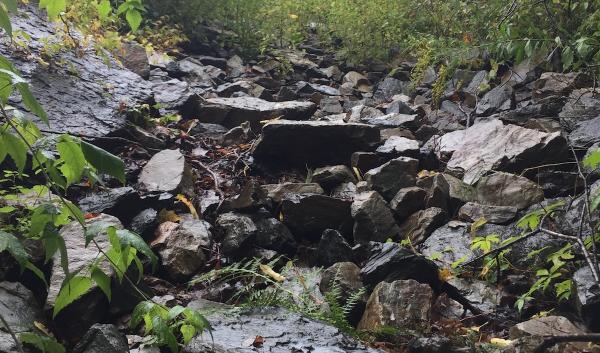Across New England “Low-volume” roads provide a critical transportation link for rural communities and commerce.
“Low-volume” roads are roads with traffic volumes generally less than 400 vehicles per day. They often provide access to forests for logging and other forest management activities. Seasonal freeze-thaw conditions control the ability of vehicles to safely use these roads. In the coldest winter periods, heavier vehicle weight limits (premiums) are sometimes permitted because the road has increased strength and stiffness. However, during spring thaw periods (a.k.a. “mud season”), these frozen roads begin to weaken as they thaw, becoming subject to damage from heavy trucks, or even entirely unusable.
Allowing trucks to haul heavier loads during the winter benefits the forestry industry. Lower weight limits during the spring thaw protect roads and reduce repair costs. However, lower limits negatively impact logging, trucks carrying sap for maple syrup production, and other shipping activities. Some New England states increase the allowable weight limit on a set date without considering whether or not the roads have frozen. During the spring, the traditional method for preventing heavy vehicles from damaging roads is to restrict roads using temporary weight reductions. However, deciding when to place and remove these weight limits is often challenging and controversial.
Our recent warmer and shorter winters mean that winter freeze and spring thaw periods for roads are less dependable.
Historically, the average freezing season lasted between 9 and 13 weeks throughout the White Mountains region in New Hampshire and mid-state Maine. The frozen period has already shortened by about a week, and within 20 years, the typical winter freeze period may shorten by an additional two weeks. It is possible that these regions could routinely have no frozen period by 2070. In addition, many of the New England areas with posted roads are well known for their year-to-year winter variability; in the future, this variability will likely increase.
As a result, efficient road management is becoming more challenging.
Both road users and the agencies that manage roads are interested in better predicting conditions that merit load premiums or restrictions. To help road managers make those predictions, several members from the Infrastructure & Climate Network (ICNet) worked with NOAA’s Northeast Regional Climate Center to develop tools (http://www.nrcc.cornell.edu/industry/roads/) to better assess roadway freeze-thaw conditions. Using NOAA’s data, they created a roadway freeze-thaw map interface that improves management of road loads. This allows road managers and users in the Northeast to forecast, a week in advance, when winter load increases should be applied or suspended, and when spring load restrictions should go into effect. The tool was piloted in the winter of 2017. This upcoming winter, it will be ready to support informed decisions to protect roads, as well as the industries and communities depending upon them.




